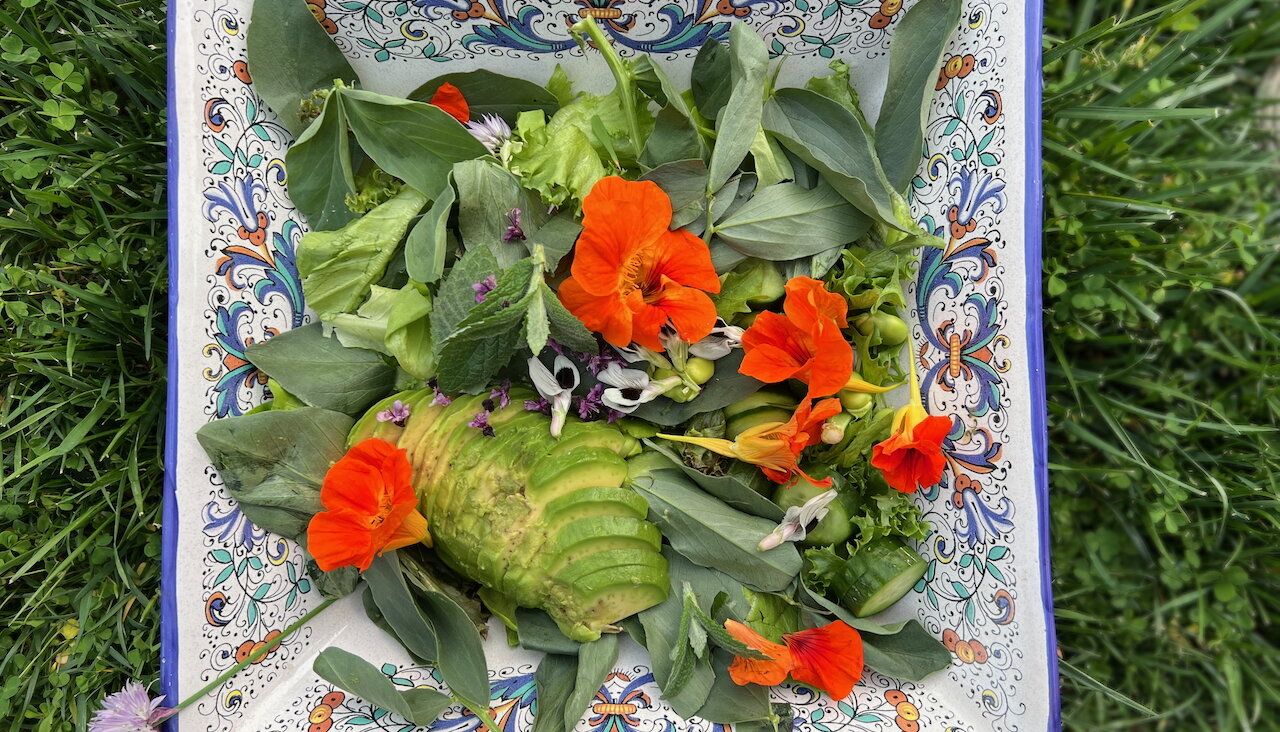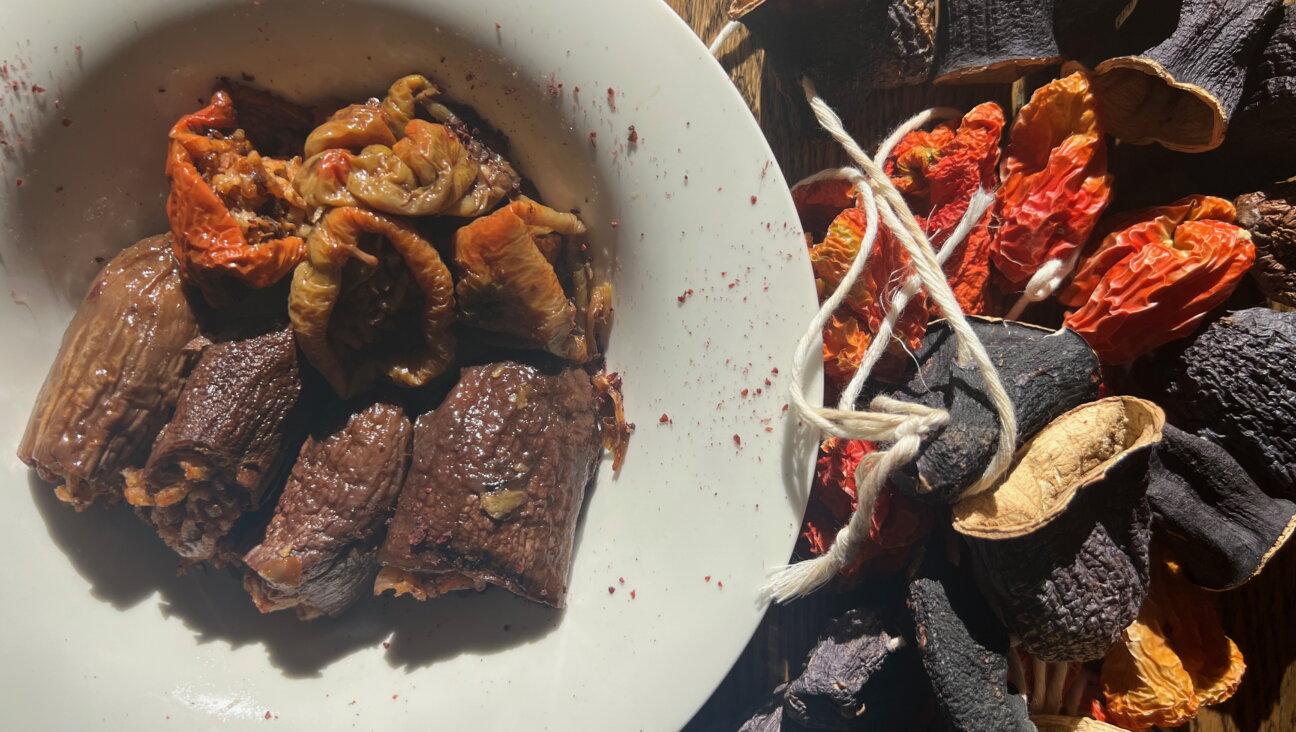Bagels and the Perfect (Homemade) Schmear

Image by Blair Nosan
I’ve been basking in the glory of a vibrant Jewish food community since moving to Detroit in 2009. From bountiful shabbat potlucks, heated debates about the role of urban agriculture, and teaching Jewish “Farm to Fork” curricula in suburban Jewish institutions, my friends and I have been busy. Despite of all the excitement, there has been one glaring absence: Bagels. I’m not just talking about authentic Jewish boiled bagels either — from Einstein’s to Detroit Bagel, all things round, doughy and savory have followed the mainstream Jewish population out of the city and into the suburbs. This was a situation that needed addressing!
While the intensity of my desires and my do-it-yourself attitude had me plugging away at rudimentary efforts to make sourdough bagels, a more yeasty affair rolled into town: the Detroit Institute of Bagels. Two brothers, hoping to start a bagel business, had asked to kick things off with a bagel fundraiser at my synagogue. As a self-titled “spontaneous preservationist” (I run a pickle/preserves business called Suddenly Sauer) and a less than capable baker, I eagerly re-assessed my goals and switched from bagel baking to finding an old world, nutritious, and delicious way to make the perfect schmear.
I found a recipe for cream cheese in Anne Mendelson’s “The Surprising Story of Milk through the Ages”. In the “Fresh Cheeses” section, she describes how the majority of our modern cream cheese is made through a process called “hot-packing,” which, besides sounding quite sci-fi, also involves a lot of industrial equipment, stabilizers and gums. Homemade cream cheese is fresher, lighter, more tangy, and far less thick and gummy than Philly cream cheese. She warns “If you have never eaten any kind of cream cheese except Kraft’s Philadelphia… the homemade version will require some mental readjustment.”
Mendelson insists that cream cheese is a great confidence builder for amateur cheesemakers. Because cream carries less casein in it than milk, cream cheeses curdle much less dramatically than milk cheeses, resulting in a process requiring little more human intervention than draining whey, and no laborious curd-cutting.
I have been known, in my old-world experimentations, to miss my mark when it comes to replicating modern favorites using traditional methods and ingredients. My list of snafus is long, and includes everything from stone ground wheat flour hamentaschen, to squash peel vinegar. (Don’t ask.) But this cream cheese has been an entirely different story. Not only has it received high praise from many a critical food loving Jew, but all of my critics were careful to note that they loved the cream cheese precisely because it simultaneously captured the essence of “real” cream cheese, while being fresh, wholesome, and the perfect compliment to a homemade bagel. So while Mendelson was right about the ease, she may have missed the mark on the expected reception. The people (and Detroit Institute of Bagels) want fresh cream cheese, and I’m more than happy to provide.
Perfect Cream Cheese
8 cups un-homogenized whole milk (if you cannot find this, you may replace it with 2 cups heavy cream 6 cups skim milk)
1 cup cultured buttermilk
5 drops vegetable rennet
1+ teaspoon salt
thermometer
strainer
cheese cloth
1) Over low heat, bring the milk and the buttermilk up to 90 degrees.
2) While you’re waiting, mix the rennet into about 2 teaspoons of water.
3) Once the milk/buttermilk has reached 90 degrees, pull it off the heat and stir in the rennet.
4) Place the pot in a warm place (oven with a pilot light works best!) and let it sit undisturbed for 6-8 hours.
5) When you go to check on it, you should notice that the curd has pulled away from the sides of the pot, resulting in a big blog of white curd floating in whey.
6) Press the curd with a finger to make sure it’s dense enough to hold together and push back just a bit.
7) Set your strainer, lined with a cheesecloth, over your sink or a bowl. Pour the curds and why through the cheesecloth and tie the loose edges together around the draining cheese.
8) Let it sit overnight (roughly 12 hours).
9) Remove the cheese from the cloth, mix in salt to taste (with a whisk or an immersion blender).
10) Store in the fridge for 1 week.
From “Milk” by Anne Mendelson Copyright © 2008 by Anne Mendelson
The Forward is free to read, but it isn’t free to produce

I hope you appreciated this article. Before you go, I’d like to ask you to please support the Forward.
Now more than ever, American Jews need independent news they can trust, with reporting driven by truth, not ideology. We serve you, not any ideological agenda.
At a time when other newsrooms are closing or cutting back, the Forward has removed its paywall and invested additional resources to report on the ground from Israel and around the U.S. on the impact of the war, rising antisemitism and polarized discourse.
This is a great time to support independent Jewish journalism you rely on. Make a gift today!
— Rachel Fishman Feddersen, Publisher and CEO
Support our mission to tell the Jewish story fully and fairly.
Most Popular
- 1

Fast Forward Ye debuts ‘Heil Hitler’ music video that includes a sample of a Hitler speech
- 2

Opinion It looks like Israel totally underestimated Trump
- 3

Culture Is Pope Leo Jewish? Ask his distant cousins — like me
- 4

Fast Forward Student suspended for ‘F— the Jews’ video defends himself on antisemitic podcast
In Case You Missed It
-

Fast Forward For the first time since Henry VIII created the role, a Jew will helm Hebrew studies at Cambridge
-

Fast Forward Argentine Supreme Court discovers over 80 boxes of forgotten Nazi documents
-

News In Edan Alexander’s hometown in New Jersey, months of fear and anguish give way to joy and relief
-

Fast Forward What’s next for suspended student who posted ‘F— the Jews’ video? An alt-right media tour
-
Shop the Forward Store
100% of profits support our journalism
Republish This Story
Please read before republishing
We’re happy to make this story available to republish for free, unless it originated with JTA, Haaretz or another publication (as indicated on the article) and as long as you follow our guidelines.
You must comply with the following:
- Credit the Forward
- Retain our pixel
- Preserve our canonical link in Google search
- Add a noindex tag in Google search
See our full guidelines for more information, and this guide for detail about canonical URLs.
To republish, copy the HTML by clicking on the yellow button to the right; it includes our tracking pixel, all paragraph styles and hyperlinks, the author byline and credit to the Forward. It does not include images; to avoid copyright violations, you must add them manually, following our guidelines. Please email us at [email protected], subject line “republish,” with any questions or to let us know what stories you’re picking up.















